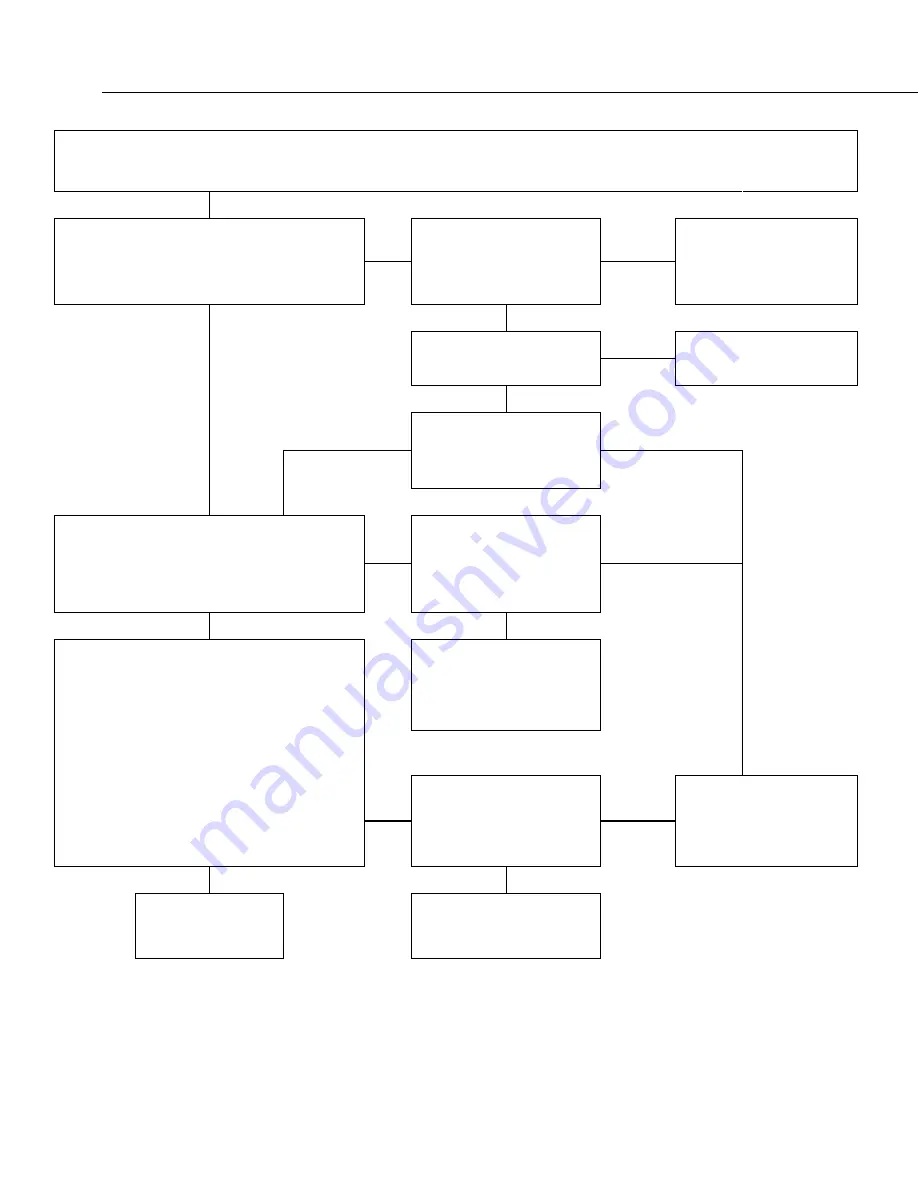
Section 10. Troubleshooting
480
Charging Regulator with Solar-Panel Test
Disconnect any wires attached to the
12V
and
G
(ground) terminals on the PS100 or CH100 charging regulator. Unplug any batteries. Connect the solar panel to the two
CHG
terminals.
Polarity of inputs does not matter. Only the solar panel should be connected. Set the charging-regulator power switch to
OFF
.
NOTE
This test assumes the solar panel has an unregulated output.
Solar Panel Test
Set a voltmeter to measure dc voltage. Measure solar panel output
across the two solar-panel leads by placing a voltmeter lead on one
CHG
terminal, and the other lead on the other
CHG
terminal. Is the
output 17 to 22 Vdc?
Remove the solar-panel leads from the
charging circuit. Measure solar-panel
output across the two leads. Is the output
> 0 Vdc?
The solar panel is damaged and should
be repaired or replaced.
No
No
Yes
Yes
Is the voltage ≥ 17 Vdc?
There may not be enough sunlight to
perform the test, or the solar panel is
damaged.
No
Yes
Reconnect the power source (transformer /
solar panel) to the
CHG
terminals on the
charging regulator. Measure the voltage
between the two
CHG
terminals. Is the
voltage ≥ 17 Vdc / Vac?
Yes
No
5 kΩ Load Test
1) Place a 5 kΩ resistor between a
12V
terminal and a
G
(ground)
terminal on the charging regulator.
2) Switch the power switch to
ON
.
3) Measure the dc voltage across the resistor.
Is the measured voltage 13.3 to 14.1 V?
Measure the voltage between the two pins
in a battery-connection receptacle. Is the
voltage 10.0 to 15.5 Vdc?
No
No
Yes
Yes
50 Ω Load Test
1) Switch the power switch to
OFF
.
2) Disconnect the power source (transformer / solar panel).
3) Remove the 5 kΩ resistor
4) Place a 50 Ω, 1 W resistor between a
12V
terminal and a
G
(ground) terminal on the charging regulator.
5) Reconnect the power source and then switch the power switch to
ON
.
7) Measure the voltage across the ends of the resistor.
Is the voltage 13.0 to 14.0 Vdc (13.3 if circuit just adjusted)?
8) Switch the power switch to
OFF
.
NOTE
The resistor will get HOT in just a few seconds. After
measuring the voltage, switch the power switch to
OFF
and allow the
resistor to cool before removing it.
See
Adjusting Charging Voltage
(p. 482)
to calibrate the charging regulator, or
return the charging regulator to Campbell
Scientific for calibration.
With the charging regulator still under
load, measure the voltage between the two
CHG
terminals. Is the voltage > 15.5
Vdc?
Get Repair Authorization
The charging regulator is damaged and
should be repaired or replaced.
No
Yes
Yes
No
Test Completed
The charger is functioning
properly. Remove the 50 Ω
resistor.
There may not be enough sunlight to
perform the test.
Summary of Contents for CR800 Series
Page 2: ......
Page 4: ......
Page 6: ......
Page 32: ......
Page 34: ......
Page 54: ......
Page 92: ......
Page 310: ......
Page 446: ...Section 8 Operation 446 8 11 2 Data Display FIGURE 100 CR1000KD Displaying Data ...
Page 448: ...Section 8 Operation 448 FIGURE 102 CR1000KD Real Time Custom ...
Page 449: ...Section 8 Operation 449 8 11 2 3 Final Storage Data FIGURE 103 CR1000KD Final Storage Data ...
Page 450: ...Section 8 Operation 450 8 11 3 Run Stop Program FIGURE 104 CR1000KD Run Stop Program ...
Page 452: ...Section 8 Operation 452 FIGURE 106 CR1000KD File Edit ...
Page 456: ......
Page 462: ......
Page 523: ...Section 11 Glossary 523 FIGURE 116 Relationships of Accuracy Precision and Resolution ...
Page 524: ......
Page 526: ......
Page 556: ......
Page 558: ......
Page 560: ......
Page 597: ......
















































